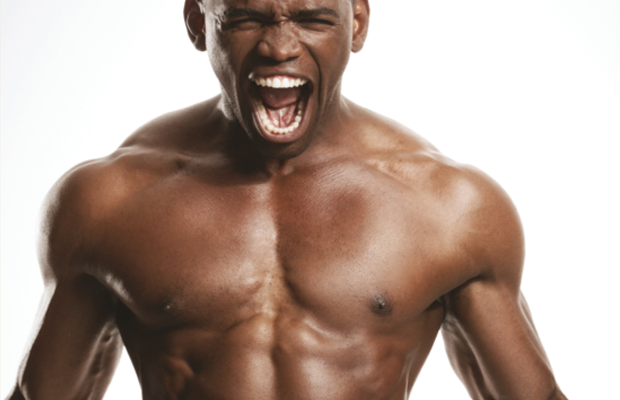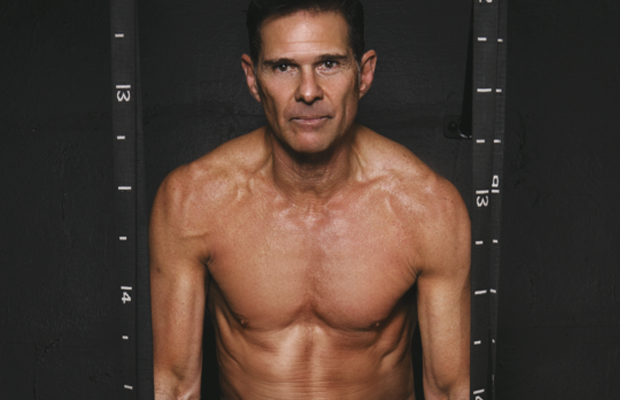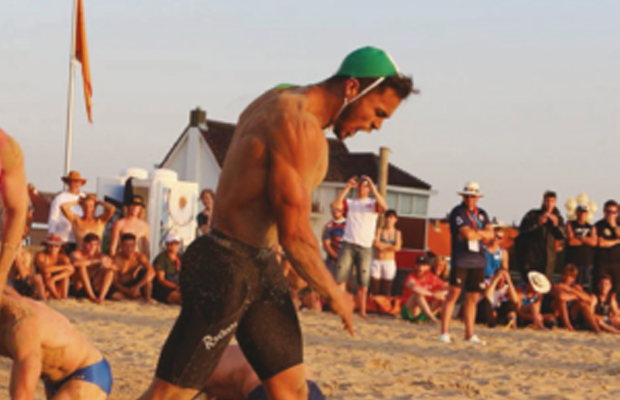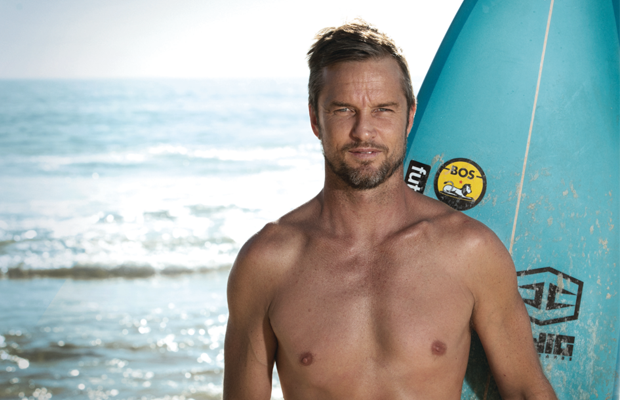Health24.com | How to stay fit and strong in your 20s, 30s, 40s and 50s
Looking for the elixir of life? We hate to let you down, but it doesn’t exist.
That doesn’t mean you can’t live a long, strong, healthy life.
Consider this your manual to be the best you, at every stage of your life.
Regardless of the DNA you inherited, you can get slimmer, stronger and smarter as you grow older.
This is not just for looks, but rather so you can enjoy every single day and do all the things you want, right up until your last breath. (And let’s be honest, a six pack is a great side benefit.)
Read on for advice from role models from a variety of training and fitness backgrounds.
20s
The lowdown
Physically, you’re in your prime. Now’s the time to take advantage of that before age-associated illnesses or injuries potentially sink in down the line. If you’re looking at breaking any records, world or personal, now’s the time.
“Both your testosterone and human growth hormones (HGH) are at their all-time high, your anaerobic capacity is virtually limitless, your recovery time is shorter than ever and your confidence is through the roof,” says Brandon Hinton, owner and head trainer at pureathleteperformance.com.
Hinton says you should prioritise speed and power while laying the foundation to long-term performance. “Your programme should include plenty of explosive movements in the weights room, paired with doses of cardio.”
But don’t let youth go to your head. “Stay focused on form, ensuring every rep is done correctly to avoid a visit to the doctor.”
Ryle De Morny
Height: 1.83m
Weight: 80kg
Age: 28
Secret to success: consistency
De Morny is a national competitive lifeguard, personal trainer and entrepreneur. “Early on in my 20s I was all about gains and aesthetics,” says the 28-year-old Capetonian. “Now that I’m focusing on performance, the looks are coming anyway. I’m constantly learning as I compete and travel and chat to guys,” he says – and this approach extends to his training, a varied mix of sprint sessions, open-water and flat-water paddling sessions, as well as CrossFit and functional gym training.
“Perhaps the most important thing I’ve learnt through my 20s is to be more efficient in my training,” he says. According to De Morny, it’s more effective to stick to consistent sessions than three or four massive sessions in a week. He is also adamant that you shouldn’t neglect pre-hab.
“Add just one day of mobility work to your schedule, and work essential areas, like rotator cuffs, that can wear out from overuse.”
Your play: red line your training
Your capacity to maintain intense effort and your ability to recover between sessions is higher than it will ever be. You can thank your raging T-levels for this.
1. Explode
Sprint efforts, such as hill repeats or shuttle runs, will allow you to enter the sacred red zone, leading to an increase in both your VO2 Max and lactate threshold. Adding this into your training routine just a few times per week will greatly increase your anaerobic capacity and long-term cardiac health.
2. Rest short and hard
The amount of recovery time needed between training sessions is less than ever, allowing you to double up training days and maximise your potential. This is due to a lower resting heart rate and peaking HGH levels. Pair this with a regular eight hours of sleep and the occasional afternoon siesta to really tap into your potential.
Weekly training overview: your training breakdown
Strength training (2 to 3 sets of <6 reps at 85–95% of max, 1 or 2 times per week)
Power training (3 to 4 sets of 5 reps at 75% of max, 1 or 2 times per week)
Cardio (20 to 30 minutes of high-intensity cardio, 1 or 2 times per week)
Cross training (30 or 60 minutes of low-intensity cardio once a week)
The workout: Take 2 seconds to lift and 4 seconds to return. Rest 2 minutes between short sets, and 1 in the long sets.
Day 1 and day 3: strength training
Keep to a tempo of 3 seconds up, 3 seconds down with each lift, resting for 2 minutes between each set
Deadlift: 3 sets of 6 reps
Bench press: 3 sets of 6 reps
Squat: 3 sets of 6 reps
Bent-over row: 3 sets of 6 reps
Alternating lunge: 3 sets of 6 reps
Day 2 and day 4: cardio
Warm-up and cool down with 10 minutes easy jogging
30 seconds max effort, 2.5 minutes easy. Repeat 10 times
Day 5: power lifting
Keep the tempo explosive at 1 second up, 1 second down with each rep, resting for a full 3 minutes between each set.
Clean and press: 4 sets of 5 reps
Alternating split – squat jump: 4 sets of 5 reps
Clapping push-up: 4 sets of 5 reps
Box jump: 4 sets of 5 reps
30s
The lowdown
The time when too many let go and write off a bulge in waist size to the nine-to-five grind, piled on top of dad duties. Don’t let it happen to you.
“Know this: after 30 years of development, your cardio engine is at its peak, making it the perfect time to chase that fitness and possibly sporting dream you’ve always longed for – like completing a stage race or marathon,” says Hinton.
He’s quick to add that while it’s important to keep the physical engine going, this is also a time when you should be paying a lot more attention to your mental wellbeing.
“Make time for yourself,” he says. According to an article published in the BC Medical Journal, stress is one of the main reasons of suicide in 30- to 40-year-old males.
“Just as you schedule important meetings with the senior manager into your diary, schedule in your workouts, too. Not only will this ensure you regularly get your sweat on, but it’ll provide you with a chance to work on your mental health too.”
Siv Ngesi
Height: 1.76m
Weight: 88kg
Age: 31

Secret to success: do what you love
Sivuyile “Siv” Ngesi is an actor, comedian and MC. Currently he’s shooting a global travel show, so his schedule is so hectic that he doesn’t see much home and gym time. Yet he still makes it happen.
“In my 30s I’ve realised that I have to be smarter with my workouts,” he says. “Before, I could workout for an hour, not eat any protein and still gain muscle. And then just bounce back and do it again the next day – not anymore.”
According to Ngesi, the most important part of his training now is not the workout but the recovery process. “I make sure that I’ve eaten before a workout, and make sure that I fill up with protein when I’m done.”
Because his schedule is so demanding, Ngesi believes it’s crucial to do a type of training or cardio activity that makes you happy, while giving great physical benefits. For him, that’s boxing.
Your play: capitalise on endurance
“Although your ability to maintain a maximum effort for extended periods of time is dwindling, your tank is bigger than ever before,” says Hinton – so now is the best time to hit the tarmac or trail.
“Not only will the longer hours of training and competition put you right in the sweet-spot of your fat-burning zone, but it’ll also ramp up your serotonin – the feel-good hormone responsible for regulating both sleep patterns and appetite while increasing mood and sexual desire.”
He suggests the following:
1. Stay functional
Start and end each session with a minimum of 15 minutes of mobility work. This includes functional movements (like bear crawls and walk-outs) with foam-rolling and dynamic stretching to keep you supple and injury-free.
2. Keep a tempo
Tempo sessions on the indoor rower provide the perfect opportunity to increase your lactate threshold (the point that your cardio system begins to produce lactic acid faster than it can get rid of). Not only will this offer a full-body shred session, but it’ll increase your cardiovascular systems efficiency in absorbing and transporting oxygen.
Weekly training overview: your training breakdown
Hypertrophy training (3 to 6 sets of 6 to 12 reps at 67 to 85% of max, 1 or 2 times per week)
Mobility training (30 minutes of functional movements, foam-rolling and stretching, 2 or 3 times per week)
Tempo training (5 to 10, 5-minute efforts at 70 to 80% of your max heart rate, 1 or 2 times per week)
Aerobic training ( >60 minutes at 60 to 70% of your max heart rate, 1 or 2 times per week)
The workout: Take 2 seconds to lift and 4 seconds to return. Rest 2 minutes between short sets, and 1 in the long sets.
Day 1 and 3: hypertrophy training
Keep to a tempo of 3 seconds up, 3 seconds down with each lift, resting for 60 seconds between each set.
Front squat: 5 sets of 10 reps
Hip thrust: 5 sets of 10 reps
Upright row: 5 sets of 10 reps
Overhead press: 5 sets of 10 reps
Barbell roll outs: 5 sets of 10 reps
Day 2 and 4: aerobic training
Warm-up and cool down with 10 minutes easy jogging
60 minutes at 60 to 70% of your max heart rate
Day 5: tempo training
Warm-up and cool down with 10 minutes easy jogging
5 minutes at 70 to 80% of MHR, 1 minute at 60% of MHR. Repeat 5 times
Day 6: mobility training
Warm up with 15 minutes of foam-rolling
Bear crawls: 3 sets of 15 reps
Walk-outs: 3 sets of 15 reps
Body weight pistol squat: 3 sets of 15 reps
Pull-up: 3 sets of 15 reps
Straight-arm plank: 3 sets of 45 seconds
Shoulder taps: 3 sets of 15 reps (per arm)
40s
The lowdown
As you age, gain experience and grow wise, so your training should evolve, too.
“Complex training is your new best friend,” Hinton says. “Short, high-intensity forms of training are time-efficient and will leave your metabolism scorching calories long after you leave the gym.”
Hinton suggests pairing a strength exercise with a multi-joint plyometric exercise (such as a bench press and clapping push-ups) into complex sets with little to no rest between.
“This will stimulate fast-twitch fibre growth while simultaneously awakening the nervous system.”
This in turn can help fight the onset of Alzheimer’s and dementia, both of which are more likely to develop in your 40s. Now might be the best time to invest in a coach.
“The extra set of eyes will ensure that you focus on form over load, breaking bad habits that you might have formed over the years.”
Grant Baker
Height: 1.80m
Weight: 73kg
Age: 44
Secret to success: do something everyday
Grant “Twiggy” Baker is a multiple RAMP UP THE HIIT WSL World Big Wave surfing champion and one of South Africa’s most accomplished all-round watermen.
“Big wave surfing is all about confidence,” says the man from KZN. “Your mental confidence comes directly from your physical conditioning; if you’re not feeling fit and healthy you’re going to have a problem committing to a big wave.”
Baker stays in shape and keeps his confidence sharp by hitting the gym three times a week. “For the first time in my life I have a personal trainer,” he admits, explaining how in his 20s and 30s he could get away with just surfing as training, but to stay at the top of his sport, he’s had to ramp up his cross-training.
“If I’m honest, I think I’m in better shape now than ever, purely because I’m putting in the time and the work.”
“My gym training is obviously surf-focused, but kind of broad at the same time. With surfing your upper back, shoulders and arms get a lot of work – and at gym we focus on other areas, like my chest, core and legs, which doesn’t get the workout from the surfing.”
Baker has had knee surgery and lower back issues in the past few years so that also factors into his programme. “We are also working on those areas and making sure I’m strong around there so those problems don’t recur.”
“When you’re young you tend not too focus too much on what you eat,” Baker says. “But, as you get older and want to keep competing at the highest level, your diet becomes more and more important too.”
Most importantly though, Baker gets in the water every day, in some way or other. “Depending on conditions, I will either surf, stand-up paddleboard, kite-surf or spearfish,” he says. “Doing something in the ocean every day not only helps maintain my fitness levels, but also helps keep me in tune with the ocean.”
Your play: ramp up the HIIT.
“Combining strength training with high-intensity interval training (HIIT) will allow you to enhance both your cardiorespiratory fitness and muscular strength in one short workout – the perfect concoction for blasting fat during your busy schedule,” says Hinton.
According to Hinton, the key is to make sure you keep the work-to-rest ratio even, with intense efforts at 80 to 95% of your max heart rate, lasting between 1 to 8 minutes with an equal active recovery at 40 or 50% of your max.
“Don’t skimp on an effective cool down, either. Spend a minimum of 10 to 15 minutes at the end of each session dedicated to light cardio and stretching as your body enters the post-exercise period called Excess Post-Exercise Oxygen Consumption (EPOC) – a two-hour period where the body continues to burn calories, totalling to 6 to 15% of the overall workout energy expenditure.”
Here’s what he suggests:
1. Recovery
Don’t skip on the shuteye. A 2010 study published in the journal Sleep, conducted over 25 years covering more than 1.3 million participants, discovered that those who got fewer than six hours of shuteye per night were 12% more likely to die prematurely. Here’s the worse news: those who overslept (nine hours and up per night) were even more at risk, at 25%. Why? Sleeping too much is seen as a potential indicator of underlying ailments.
The sweet spot: a regular seven hours per night. This will not only improve your life expectancy through the steady release of growth hormones, but also increase your immune health and memory, while reducing your hunger levels. However, your recovery goes beyond sleep: take in a minimum of 56g of lean protein per day and set aside the time to give your body some TLC too.
2. Myofascial release
As you settle into the sedentary life, your joints begin to lose their capability, and you are less able to move through the same range of motion as you did 10 years ago. Increasing your mobility through regular foam-rolling and dynamic stretching can help release tight fascia (also known as trigger points), relieve muscle pain, increase circulation and gradually restore your range of motion.
Weekly training overview: your training breakdown
HIIT training (30 to 40 minutes of 1 to 8 minutes at 80 to 95% of MHR with equal active recovery at 40 to 50% of MHR, 1 to 3 times per week)
Mobility training (30 minutes of functional movements, foam-rolling and stretching, 1 or 2 times per week)
Core strength (2 to 3 sets of 12 to 20 reps at <67% of max, 1 to 2 time per week)
Aerobic training (60 to 90 minutes at 60 to 70% of your max heart rate, 1 or 2 times per week)
The workout: Day 1 and 5: HIIT and mobility training
Mobility:
Foam-rolling: 10 minutes
Walk-outs: 12 reps
Single-leg body weight deadlift: 12 reps
Resistance-band hamstring stretch: 30 seconds
Pigeon stretch: 30 seconds
Doorway pec stretch: 30 seconds
HIIT:
Push-up: 2 minutes, as many reps as possible for time
Indoor rower: 2 minutes at 40–50% of MHR
Alternating split-squat jump: 2 minutes, as many reps as possible for time
Jog: 2 minutes at 40 to 50% of MHR repeat 4 or 5 times
Keep to a tempo of 3 seconds up, 3 seconds down with each lift, resting for 60 seconds between each set.
Day 2 and 6: aerobic training
60 to 90 minutes of cycling at 60 to 70% of your max heart rate
Day 3: core strength
Plank: 3 sets of 60 seconds
Side plank: 3 sets of 45 seconds per
Side single-leg glute bridge: 3 sets of 60 seconds per side
Barbell roll-out: 3 sets of 15 reps
Russian twist: 3 sets of 15 reps
50s
The lowdown
Truth is that you no longer working out to look good, but you’re working out to stay alive. Exercise – with its ability to fight off disease, boost your immune system and improve your sex life – has been proven to be one of the most beneficial forms of medicine out there, so the bigger the dose, the better.
Although you can’t jump as high or run as fast as the young guns, you are still able to hold your pace as your endurance capacity is just as potent as it was in your early 20s.
“Now’s the time to find something that excites you and drives you to get up and training through those winter mornings,” says Hinton. Maybe it’s time to take on that crazy idea of conquering the Cape Epic or tackling an Ironman?
Non-weight bearing activities, such as swimming and cycling, are great for your joints, but don’t skip the gym. “As you age, your bone density decreases and the chance of developing osteoporosis skyrockets. Resistance training will not only prevent that, but also increase the production of synovial fluid (the lube to your joints) to fight off the dangers of osteoarthritis.”
Manny Bisogno
Height: 1.79m
Weight: 73kg
Age: 57
Secret to success: find your joy
Manny Bisogno is stronger than you are. While running his own business, an industrial laundry company that operates 24 hours a day, 365 days of the year, he still managed to claim the African title in his age category in the recent Reebok CrossFit Open, a five-week global competition.
“The main reason I train is because I wanted to outlive my dad,” Bisogno says. “He died at 39 from a heart attack. So from a very young age, I played a lot of sport, because I wanted to keep fit, but I also really enjoyed it.”
Bisogno has actively competed in various sports over the years and believes that enjoyment is the key. “I ran marathons for five years, then also paddled in the ocean for five years and then I lost the enjoyment. Now I have CrossFit. That enjoyment is key to staying motivated.”
Aside from the fun factor, Bisogno is adamant that you need to make time in your schedule to train, no matter how busy you are and, involve your family.
“Make training a part of your life. If you have a family, get them involved: the minute you start doing anything that cuts out your family, it becomes an issue – and it’s hard enough trying to bring up a family without creating extra unnecessary pressure,” he says. “I have daughters, and growing up, they always saw us training and thought we were crazy. Today, they train twice a day. My youngest daughter is 23; she trains twice a day. I actually only started going to Cape CrossFit in the first place because my middle daughter went before me and pushed me to try it.”
Your play: don’t slow down too much
Not everyone will have Bisogno’s drive and years of base training background, but that shouldn’t stop you from making things happen. Hinton suggests:
1. Get excited
Shake up the routine and try something new, take on a challenge, sign up to a running club or make a bet with friends.
2. Splurge
Invest in some good equipment. Expert advice will increase your efficiency and reduce your chance of becoming injured.
3. Take it easy
Focus on going long and far. Pace yourself over the climbs, keeping your average heart rate below 70% of MHR.
4. Stay agile
Emphasise neuromuscular coordination: the ability of the central nervous system to control muscles. Functional movements, like body weight squats, and hand-eye coordination drills will help.
Weekly training overview: your training breakdown
Strength endurance training (2 to 3 sets of 12 to 20 reps at <67% of max, 2 to 3 times per week)
Mobility training (30 minutes of functional movements, hand-eye coordination drills, foam-rolling and dynamic stretching, 1 to 2 times per week)
Aerobic endurance training (60 minutes at 60 to 70% of your max heart rate, 2 to 3 times per week)
The workout
Take 2 seconds to lift and 4 seconds to return. Rest 2 minutes between short sets, and 1 in the long sets
Day 1 and 4: strength endurance and mobility training
Mobility
Foam-rolling: 10 minutes
Walk-outs: 12 reps
Single-leg body weight
Deadlift: 12 reps
Resistance-band hamstring stretch: 30 seconds
Pigeon stretch: 30 seconds
Doorway pec stretch: 30 seconds
Game of catch: 2 sets of 30 30 seconds, one hand only
Strength endurance
Air squat: 3 sets of 15 reps
Walking lunges: 3 sets of 15 reps
Push-ups: 3 sets of 15 reps
Tricep dips: 3 sets of 15 reps
Supported pull-ups: 3 sets of 15 reps
Plank: 3 sets of 45 seconds
Side plank: 3 sets of 30 seconds
Day 2, 5 and 7: aerobic endurance training
Endurance training
Warm-up with 10 minutes easy
70 minutes at 60 to 70% of your max heart rate
Cool down with 10 minutes of static stretching
This article was originally featured on www.mh.co.za
Image credit: iStock


